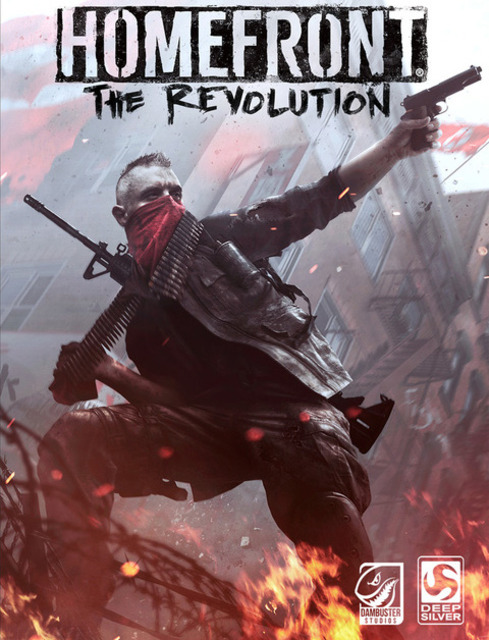Homefront has a Lot of Problems.
Video Review, https://www.youtube.com/watch?v=1dWdfX9BbO4
Taking place in2029. The game opens with an exposition dumping cinematic that tells the tale of a what-if America. What if Silicon Valley developed in North Korea, instead of California? What if America owed North Korea a bunch of debt, and defaulted on said debt? What if we dabbled in geo-politics but then quickly ran from it as soon as we remembered that’s not what your average first person shooter fan enjoys in their video games?
Homefront could have been something unique, and that’s its greatest crime. It’s got a cool premise as far as video game storylines go. The issue is it does absolutely nothing with it. You play as Beef Stock, a mute freedom fighter working alongside other non-characters. Early on you’re involved in a raid that sees the Christ-like hero of the revolution captured. It’s bizarre seeing all the side characters talking about the hero character while you carry the team. They begin giving you more credit as the game progresses, but you never become the chosen one despite being the people’s savior. It’s sort of refreshing, but again, the game does jack all with it. I’d love to play as a substantial side-character alongside the protagonist, making my mark on the story but having my sacrifices ultimately forgotten. I thought Halo Reach did a great job of this. It’s a Revolution story and I’m not a martyr? All Homefront needed to do was take some chances. Instead it plays it numbingly safe.
This predictability isn’t confined to the game’s story. The mechanics are cookie-cutter Ubisoft, complete with zones to “liberate, and towers that reveal portions of the map. You’ve seen this checkbox gameplay before and better. Not a true open world, Homefront’s maps are more akin to a Deus Ex than a Far Cry. Hubs are small city blocks sectioned off by fast travel points. When you enter a new zone, you’ll need to keep your guns tucked away while you disable speaker systems, blow up gas tanks, and generally cause enough havoc to inspire the populace to rise up. This is cool the first time you do, not so much the fourth and fifth. The shooting feels solid and surprisingly like the first game’s despite being on a different engine. Shots feel impactful and enemies react accordingly. You also can’t take too many hits, adding an air of lethality to the world and your struggle. Homefront isn’t a hard game, but it can be if you get careless.
The only vehicles include a motorcycle, though the enemy uses drones. Even the near-future technology isn’t all that intriguing. You use a smartphone seemingly hacked to use the North Korean’s infrastructure, but everything is assumed. You’re also constricted to using your own antiquated weapons, but the game never outright says why. A simple mention by one of the characters about finger print safety measures would go a long way. It’s little details like this that make worlds engaging. Homefront feels like a with a thousand ideas without the gusto to go for any of them. The game had a complicated development cycle that I rather not get into. What you need to know is that Free Radical of Timesplitters fame, worked on this game. This even manifests itself in-game as an Easter egg arcade machine lets you play two levels of Timesplitters 2. This juxtaposition only serves to make returning to the world of Homefront even more difficult.
On a positive note, level design is diverse with zones ranging from chemical wastelands, to dictatorial idealization. I don’t have much else to say that’s overly positive. The game has maybe two antagonists, while all enemy soldiers are masked nobodies. This makes it hard to think of them as people. The game runs well but I’m really digging at this point. It’s all so by-the-numbers, I was surprised humans made it and not a computer. After 20 hours, it’s difficult to feel any kind of emotion towards Homefront. All I ask, is for a game to have an identity. Homefront chose to wear a mask instead.
